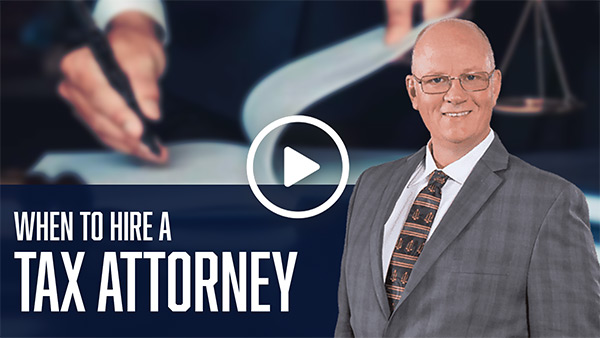
There are two types of workers: employees and independent contractors. Both provide services in exchange for compensation, but that is where the similarities end. Depending on whether a worker is classified as an employee or independent contractor, the employer will have different tax responsibilities under state and federal laws, notably the requirement to withhold and remit payroll taxes (also known as “trust fund taxes”). In light of recent California legal shifts – not to mention the immense payroll tax penalties, tax and interest that can result from worker misclassification – it’s worth reviewing how the standards for classifying workers have evolved, narrowing from a federal 20-factor test down to just three factors in California. If you’re a California business owner who’s worried about a potential worker classification audit, or if you simply have questions about payroll tax planning and compliance, the Tax Law Office of David W. Klasing can help. Unfortunately, all it takes is one Department of Labor or California Unemployment claim by an ex-independent contractor to light this issue on fire in your organization.
The Federal 20-Factor Test, and the Newest Criteria for Worker Classification in CA
If you regularly visit our tax law blog, you may recall reading that, in April 2018, the California Supreme Court issued a critical ruling reshaping the criteria for classification of employees versus independent contractors. In the ruling, Dynamex Operations v. Superior Court (2018), the Court (1) determined that then-existing standards were too ambiguous, and (2) issued new, clearer guidelines for California employers to follow.
The Internal Revenue Service (IRS) currently relies on three core standards for identifying workers properly: (1) the “behavioral control” test, (2) the “financial control” test, and (3) the “relationship of the parties” test which are analyzed under a “20 -factor test” which requires employers to assess:
- Control over the order or sequence of work
- Demands to perform full-time work
- How compensation was provided
- How much instruction workers received
- How much training workers received
- Requirements to perform services on the worksite
- Requirements to submit reports
- The continuity of the worker-employer relationship
- The extent of the worker’s ability to realize losses or profits
- The extent to which a specific person performed services
- The extent to which the services were integrated into the business
- The flexibility of the worker’s schedule
- The level of control over assistants
- Whether business expenses or travel expenses were covered
- Whether the worker could be fired
- Whether the worker could quit without assuming liability
- Whether the worker had his or her own work facilities
- Whether the worker provided services to multiple entities
- Whether the worker’s services were publicly available
- Whether tools and materials were provided
Under Dynamex, California employers and now required to demonstrate the following if classifying a worker as an independent contractor:
- The service provider must be “free from the control and direction of the hirer.”
- The service rendered must be “outside the usual course of the hiring entity’s business.”
- The service provider must regularly perform work “of the same nature as the work performed for the hiring entity.”
As our business tax attorneys have discussed, payroll tax fraud is often rooted in worker misclassification, inevitably leading to significant penalties. For instance, the IRS may impose a trust fund recovery penalty (TFRP), making the employer personally liable for the full amount of the withholdings required. (Simply peruse any of our articles about payroll tax evasion for an idea of the fines – and jail time – that can result.)
Federal Section 530 Relief and the Voluntary Classification Settlement Program (VCSP)
While penalties for payroll tax fraud can be severe, there may be one chance at protection: Section 530 Relief. To quote the IRS, which discusses Section 530 Relief and worker reclassification here, “Section 530 provides employers with relief from federal employment tax obligations if three statutory requirements are met: 1) reporting consistency; 2) substantive consistency; and 3) reasonable basis.” So what does the IRS mean by “reporting consistency,” “substantive consistency,” and “reasonable basis”?
- Reporting Consistency – The entity must have timely filed all Forms 1099 (Miscellaneous Income) and federal income tax returns that were required for the pertinent tax year(s).
- Substantive Consistency – The entity must not have treated the worker (“or any worker holding a substantially similar position”) as an employee after December 31, 1977.
- Reasonable Basis – The entity must have treated the worker as an independent contractor on a “reasonable basis,” which includes:
- A previous tax audit
- Established industry practices
- Legal precedents (e.g. prior IRS or federal court rulings)
- “[O]ther reasonable basis”
As the IRS notes in the same publication, “[The] reasonable basis requirement is to be liberally construed.”
In addition to Section 530 Relief, in 2011 the IRS introduced a program known as the Voluntary Classification Settlement Program (VCSP). The VCSP gives eligible entities “partial relief” from payroll taxes – but in exchange, requires participating entities to reclassify their workers appropriately. To apply for the VCSP, the taxpayer must submit Form 8952 (Application for Voluntary Classification Settlement Program (VCSP)).
California Worker Classification Audit Lawyers for Small Business Owners
Misclassifying your workers might seem like a good way to save money, but, this type of practice can not only ultimately hurt your bottom line but cause a business to outright fail. Not only can this be viewed as tax fraud in extreme cases, it is highly likely to drown you and your business in penalties, tax and interest if significant time has transpired since adopting this method of doing business– even more significantly, it could potentially send you to prison.
If you own a business in California, make sure you have reliable, on-point legal guidance from an experienced employment tax audit attorney. If you have any doubts or questions about your worker classification methods, no matter how minor, it is crucial to ensure that you are in compliance with the law. For a reduced-rate consultation with an experienced tax attorney, contact the Tax Law Office of David W. Klasing online, or call us today at (800) 681-1295.
Also, we’ve expanded our offices! In addition to our offices in Irvine and Los Angeles, the Tax Law Offices of David W. Klasing now have offices San Bernardino, Santa Barbara, Panorama City, Oxnard, San Diego, Bakersfield, San Jose, San Francisco, Oakland and Sacramento.
Helpful Q and A Library:
https://klasing-associates.com/topics/employment-tax-representation-faq/
















